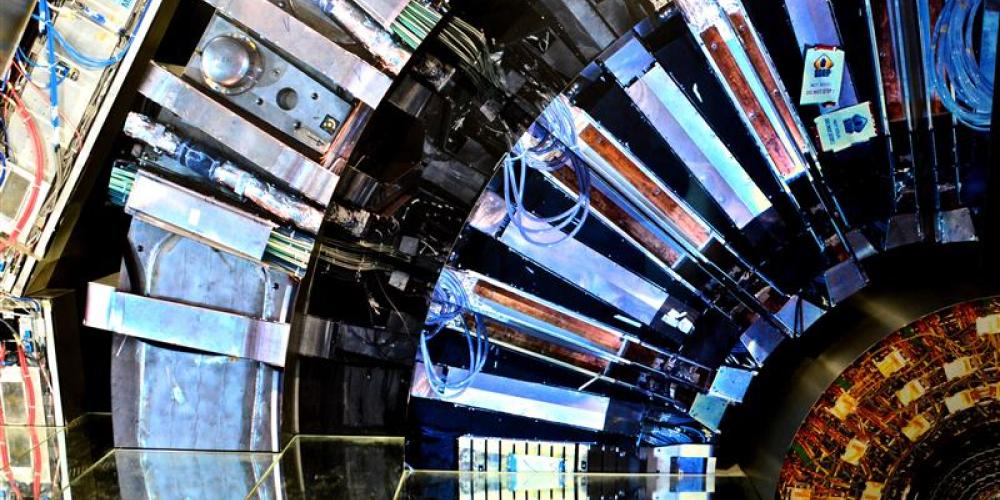
How far can we still test the Standard Model of particle physics? Very far, if it is up to young researchers Kunal Gautam and Eduardo Ploerer. In their doctoral research, conducted at the Vrije Universiteit Brussel (VUB) and the University of Zurich, they are developing groundbreaking methods to equip the planned Future Circular Collider (FCC-ee) with eyes and brains that are sharper than ever before.
"The FCC-ee will be a precision instrument," says Gautam. "But that precision must be supported by new analysis techniques and detectors. Only then can we reveal the subtlest deviations from the Standard Model."
A key element in this endeavour is jet flavour tagging: smart algorithms that identify the fingerprint of a quark from the jumble of particles created in collisions. Quarks are elementary particles. As far as we know, they have no internal structure and can therefore be regarded as the smallest building blocks of matter known to us today. Distinguishing between the different types of quarks that emerge during collisions in the accelerator is not as straightforward as it may seem. To address this challenge, both young researchers and their colleagues designed the DeepJetTransformer algorithm, a new neural network based on the latest transformer technology from the current arsenal of machine learning techniques. The programme works like a smart computer brain that recognises patterns in enormous amounts of data, similar to how ChatGPT understands language. In this case, it involves data from particle accelerators, where the elementary quarks that emerge from the collisions lead to bundles of particles, called jets, which are measured by the particle detectors. However, these jets are so complex that it is difficult for researchers to determine exactly which type of quark is at the basis of which jet. DeepJetTransformer makes that process much more accurate and efficient, giving scientists a better understanding of the processes that occurred during the collisions and the sometimes exotic new particles that were formed in the process. ‘It combines speed with accuracy,’ explains Gautam. "For example, we can distinguish jets coming from charm and bottom quarks very well, and even identify jets from strange quarks (“strange jets”) with surprisingly high efficiency, something that was almost unthinkable until now."
The research is not merely theoretical speculation. Thanks to the new method, the extremely difficult-to-reconstruct decay of the Z boson, a heavy particle discovered in the 1980s that plays a key role in the weak nuclear force, to strange quarks can be observed within seconds in the proposed FCC-ee accelerator. This is quite remarkable because the process is normally completely drowned out by the abundance of other particles created in collisions. Moreover, the measurement accuracy is improved by a factor of almost a thousand, enabling researchers to clearly observe, for the first time, a subtle effect known as forward-backward asymmetry, in which the quarks fly slightly more often in one direction than in the other.
But theory alone is not enough: progress depends on better measuring equipment. That is why both researchers also worked on ultra-thin silicon detectors, known as monolithic active pixel sensors (MAPS). These sensors, prototypes of which are being manufactured using an advanced 65 nm production process, combine razor-sharp resolution of less than three micrometres with detection efficiency above 99 percent. "They continue to perform excellently even under heavy radiation," says Ploerer. "This is crucial for future projects such as the FCC-ee, but also for ongoing experiments such as ALICE at the LHC."
With their research, Gautam and Ploerer are laying a solid foundation for the future of high-energy physics. "The ultimate goal," they conclude, "is not only to confirm what we already know, but to be open to surprises. The FCC-ee could well be the place where cracks in the Standard Model become clearly visible."
More information:
Michael Tytgat: Michael.Tytgat@vub.be